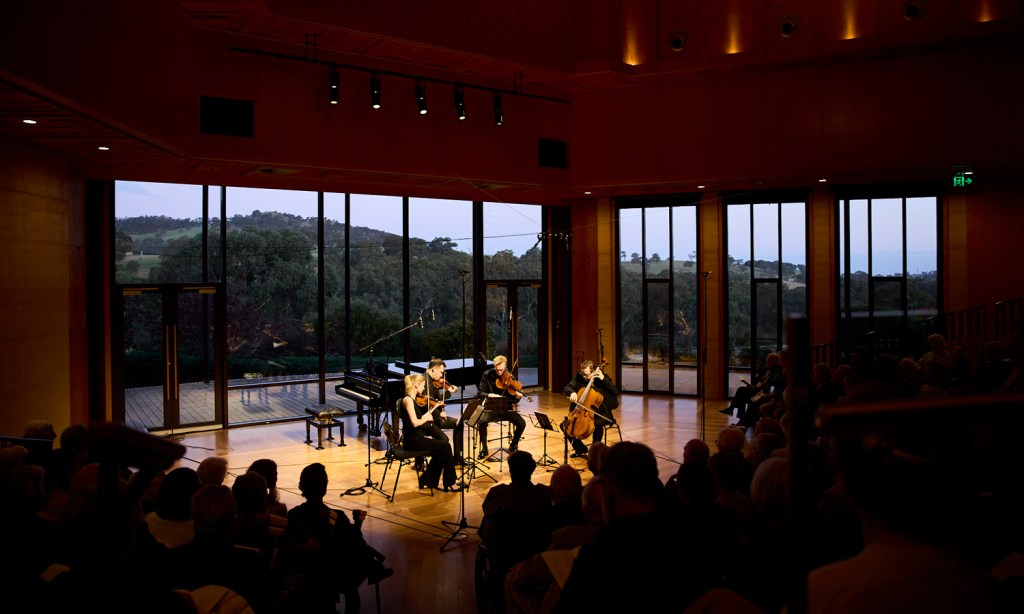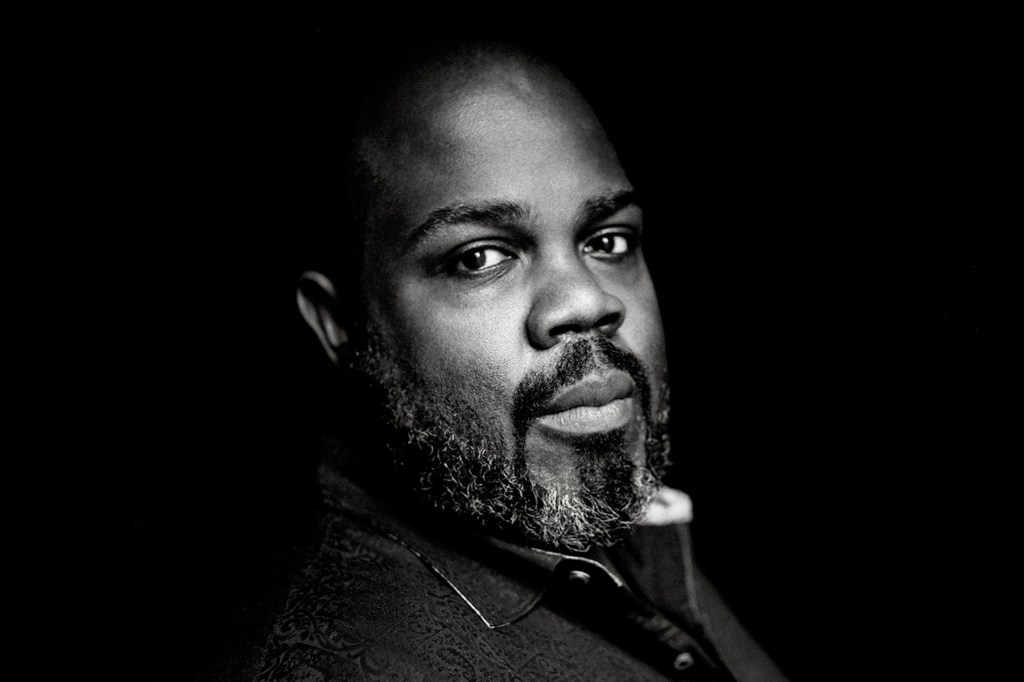Music review: UKARIA 24 features a bundle of surprises
A Beethovenian force in composition, Olli Mustonen delivered his edition of UKARIA’s centrepiece arts event with flair and eccentricity. This pianist-composer from Finland seems to dare the devil, and his performances were tremendously powerful.

Never before has a composer-pianist come out to curate UKARIA 24, the centrepiece arts event held each spring in architect Anton Johnson’s finely designed auditorium at Mount Barker Summit.
Olli Mustonen, a uniquely daring Nordic master, is the first one. From Finland, he is a foremost pianist and composer of orchestral and chamber music in that country, as well as a conductor of wide renown.
What sets him apart from just about every other figure in the classical world is his flair and eccentricity.
There is a look of the mad Beethovenian in Mustonen’s demeanour at the keyboard, and it comes as no surprise that he says the strongest connection he feels with any of the great composers is with Beethoven. Plus, there is an unmistakable stamp of jazz in his playing, too – though where that comes from is a bit of a mystery.
Put those things together and you have something well outside the ordinary. Particularly when he plays his own compositions, Mustonen is an absolute fiend.
First up, though, were Grieg’s “Nineteen Norwegian Folk Tunes”, Op. 66. Everything about the way he played these little gems was unusual. Hands raised up high and fingers trembling exaggeratedly before they fell down onto the keys, he seemed to be conducting the music while performing it.
You might like
One could dismiss these theatrics as just that – pure idiosyncrasy – were it not that Mustonen seemed to be finding a kind of vibrating energy in the air before feeding it into the music.
Whatever mysterious process he has at his command, here was a performance of unparalleled physical power and freshness. Wide dynamic contrasts, punctuating accents, and a distinctively percussive edge to his technique, put paid to the smoothness one hears with so many other pianists. Mustonen’s rhythmic discipline is several orders above the commonplace, yet he also plays with magnified flexibility – even if in places there was too much of this.
It made sense: a Scandinavian musician playing Scandinavian music, and doing so with wild, authentic spirit.

Olli Mustonen (at piano) curated a dynamic program for UKARIA 24. Photo: Claudio Raschella
Mustonen gathered several of his musical friends for the three-day UKARIA 24 event, and they seemed similarly emboldened to push matters to an extreme.
Franco-Dutch siblings Cosima Soulez Larivière and Sào Soulez Larivière, on violin and viola respectively, were joined by the more familiar figures of Kristian Winther and Timo-Veikko Valve on violin and cello in Grieg’s String Quartet No. 1. Clean and brisk, this was a bracingly modern performance. Timing was razor sharp, and there was just enough expressive warmth thanks to Cosima’s violin playing.
Subscribe for updates
Moving on to compositions by Mustonen, things got more interesting. The discovery was to find how artistically strong his work is: his pieces connect with the thinking of past masters but resolutely hold the same individual voice.
With naturally flowing melodies of folk-like character, his “Minä elän” (I am alive) for flute and guitar made a generally happy start, especially with fine playing from the Danish flautist Janne Thomsen. Her dynamic energy and complete lack of edginess makes her an outstanding player. Guitarist Ismo Eskelinen is a fine musician as well, his rounded tone blending excellently with the flute. His recalcitrant Bluetooth page turner pedal was the only adverse incident: he had to reach down and operate it by hand.
The most interesting item in the first concert, by a wide margin, was “Taivaanvalot” (Heavenly Lights), “a symphony for tenor, cello and piano”. This is based on text from the Kalevala, the same collection of epic poetry that Sibelius used in his “Lemminkäinen Suite”.
Its sinuously gripping verses plunged the listener into the darkest of worlds. Something very akin to Beethoven’s expressive breadth is allied to a skill at text-setting reminiscent of Benjamin Britten.
Singing this was Irish tenor Robin Tritschler, and what a wonderful artist he is. He painted a seething picture of the demigod Väinämöinen wrangling with various mythological creatures from the North with huge intensity.
Mustonen and Valve did not hold back, either. Their energy and precision were breathtaking. There were also hypnotically beautiful parts in this piece where adjacent harmonies alternate over a pedal point in the piano. “Taivaanvalot” is a most transfixing work, and one wished it would never end.
But the good thing was that when it did end, there was more to enjoy. An initial sample of the first two of five concerts saw music that did not let up in intensity and performers right at the top of their game.
One has to say that Mustonen’s aesthetic presents a little unfamiliarly to Australian audiences, yet his feral instinct feels recognisable, and so too does his lack of sentimentality.
With its bundle of surprises, this UKARIA 24 edition was tops for all-round creative drive.
UKARIA 24 was held on October 18-20 at UKARIA Cultural Centre. Other upcoming concerts at the centre include Jazzmeia Horn in Concert (presented by Helpmann Academy on October 27) and The Idea of North: Live Actually (November 23).

